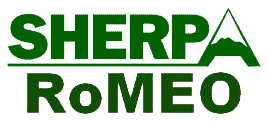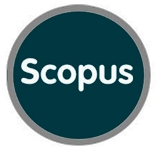TURISMO Y DESARROLLO LOCAL EN ALGUNAS COMARCAS DE LA MONTAÑA CANTÁBRICA: RECURSOS Y PLANIFICACIÓN
Abstract
The objective of this contribution is analyzing the narrow relationships that they exist between the growing development of the tourist activity and its effects on the local development in a space characterized by the rural-natural component double: the central sector of the Cantabrian Mountain. Such an objective takes as starting point the hypothesis that the proportionate impulse to the tourism in the rural spaces —and stiller in more limited mountain areas before other possible alternatives of diversification in its use ways and of its economies, like it is the case of this (Montaña Palentina and Districts of the South of Cantabria)— he has become one of the main forces of change and socioeconomic transformation, territorial and of the landscape transformation. The work leans on in a general managing principle that serves like reference and basic context that it is the binomial «territory and patrimony», around which you/they rotate the other analysis elements: territorial resources in that he translates himself this binomial and setting in march support —bases— of processes of local development that are sustained in political, forms of planning and precise strategies (regional, state and European) adapted to the singularities of this space of the Cantabrian mountain (among other, the use that is made already of the inherited patrimony in ways of exploitation of the territory today in the decline, for example).Downloads
Las obras que se publican en esta revista están sujetas a los siguientes términos:
1. El Servicio de Publicaciones de la Universidad de Murcia (la editorial) conserva los derechos patrimoniales (copyright) de las obras publicadas, y favorece y permite la reutilización de las mismas bajo la licencia de uso indicada en el punto 2.
2. Las obras se publican en la edición electrónica de la revista bajo una licencia Creative Commons Reconocimiento-NoComercial-SinObraDerivada 3.0 España (texto legal). Se pueden copiar, usar, difundir, transmitir y exponer públicamente, siempre que: i) se cite la autoría y la fuente original de su publicación (revista, editorial y URL de la obra); ii) no se usen para fines comerciales; iii) se mencione la existencia y especificaciones de esta licencia de uso.
3. Condiciones de auto-archivo. Se permite y se anima a los autores a difundir electrónicamente las versiones pre-print (versión antes de ser evaluada) y/o post-print (versión evaluada y aceptada para su publicación) de sus obras antes de su publicación, ya que favorece su circulación y difusión más temprana y con ello un posible aumento en su citación y alcance entre la comunidad académica. Color RoMEO: verde.





_.jpg)







